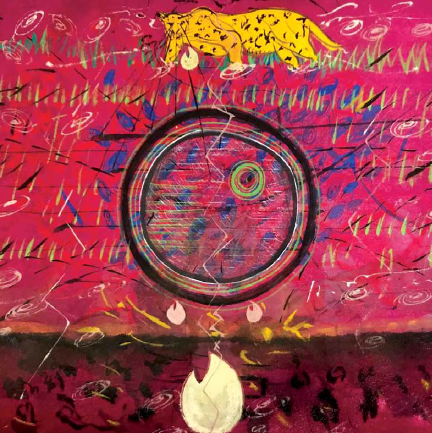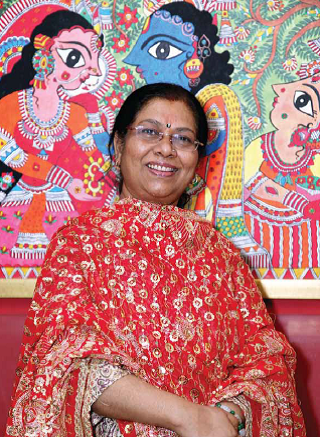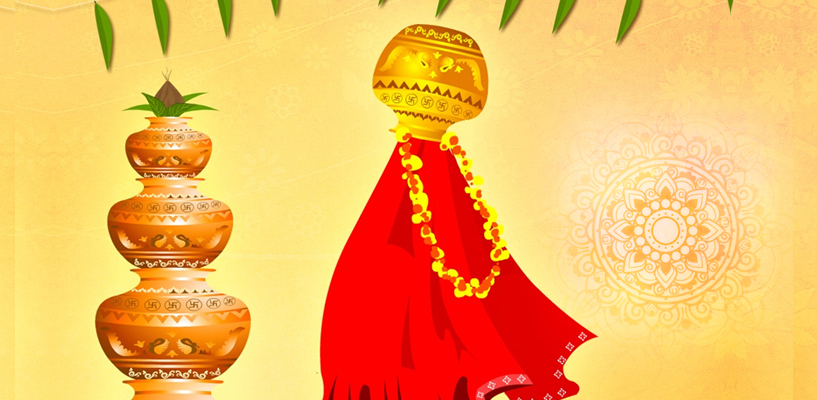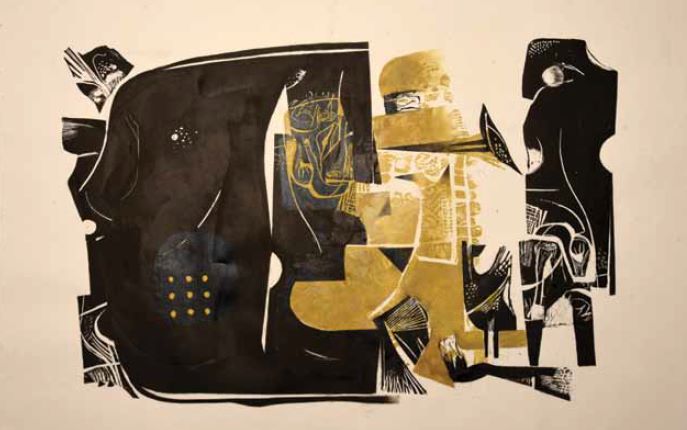
Mahima Bhayana says as an artist she sees and thinks
in lines and imagines herself as an urban born artist
seeking to apply a new practice according to a unique
perspective which is her own
TEXT: TEAM ART SOUL LIFE
Delhi-based artist Mahima Bhayana is rather vocal about patriarchy being deeply entrenched in our society and a major obstruction in her expression and experience. “I don’t think we have overcome patriarchy. We acknowledge it more,” she says. “It’s an attitude, which we face every day in society and I overcome it by confronting or manipulating it through art and solidarity.”
Bhayana says her art is an array of promiscuous questions on how she experiences her intimate truth
within and without. “Through my eyes, my mind, my ears and my heart I zoom in and I zoom out. A ripple
effect of patriarchy has been a major obstruction in my expression and experience,” she says. “Painting,
art and solidarity is my compass to navigate my way out. My approach being of intersection-ally looking,
questioning, comprehending and feeling at my life and the world around me, through a new lens of feminism.” The series titled “Conversations with Alexa” is an act of provocative response to isolation (circumstance) in 2020. “I am trying to question the contradictory nature of politics of identity and social reality for women in private, public and virtual spaces through actions of my body on a surface, in the presence of my ally Alexa. The conversations have a varied flavour about them, they are chaotic, dramatical, comical, sexual, thrilling, emotional, fictitious and confrontational,” she adds.
Bhayana says she developed an interest in art by being alone. Painting for her is an intercourse where her ideas fertilise. “As an artist, I see and think in lines. To me a line depicts emotions and has a lineage and history. I often question myself why I am so infatuated by the lines in forms and texts,” she says. Talking of miniatures, Bhayana says being a National Fellow, she spent four years in Jaipur extensively training, researching and educating in techniques of this ancient art form at a karkhana, amongst a group of miniature artists, who also happened to be her teachers. Bhayana says she had made up her mind in 2015 that she would like to create a community where miniature painting is discussed and becomes more accessible to people, especially in terms of education and revival. Through Reimagining Miniatures, Bhayana along with Devki Modi Jain aims to create a community and space for discussions around traditional and contemporary miniature practices. “Through this initiative, we are hoping to create a virtual global community of miniature artists to reimagine, connect, share, research, contextualize, question and showcase ideas and art based on miniature painting. We are very interested in understanding the gaps that are present between Indian miniature painting and modern and contemporary art from India,” she explains. Bhayana explains that miniature painting involves stillness of posture and disciplined breath control requiring utmost patience and attention to every mark. “My wasli works are a representation of this physical behaviour of the technique. However, my canvas works are a hyper movement of my body,” she informs. “The spontaneous behavioural approach through movement of body and breath towards a large surface is a child-like freedom to stillness, discipline and tradition. I view this contrast of the imagery and process of creating the works as a performative act of painting. It allows me to zoom in and zoom out of the techniques as my interaction with them progresses. I like to see this conflict as a duality that coexists in me, my approach, my beliefs, my emotions, my technique and the world.” Ask her why she paints what she paints and how she describes her art, Bhayana replies, “Painting for me is an intercourse where my ideas fertilise.
As an artist I see and think in lines. To me a line depicts emotions and it has a lineage and history.” She often questions herself why she’s so infatuated by the lines in forms and texts. How and why does she look at a line as her conceptual practice? How will she see it differently? Is she a miniaturist? But she doesn’t identify as a traditional artist! However, she’s extremely inspired by tradition. “As I exist now, I imagine an urban born artist in me seeking to apply a new practice according to a unique perspective which is my own,” she says. Bhayana says time inspires her as it’s constantly moving. “With time, evolution happens. For me that’s inspiring,” she philosophises. Bhayana likes to prepare a few natural colours in her studio from stones (kharia), Wasli and some she buys from outside. Additionally, she works on canvas and also sees her body as a medium. Bhayana, has exhibited in various museums and galleries nationally and internationally, including The National Gallery of Modern Art, India Lalit Kala Akademi, Jehangir Art Gallery Mumbai, India, Traverse Art Gallery, London, A Bus Art Museum exhibition in Los Angeles, and Ajuntamento de’Alella, Spain. Her works are in the collections of Lalit Kala Art Akademy, New Delhi, The National Gallery of Modern Art and Dhoomimal Gallery, New Delhi. She is collaborating on an initiative called the Reimagining Miniatures, that looks at both traditional and contemporary practices of miniature artists of South East Asia.








 " >
" >
 " >
" >